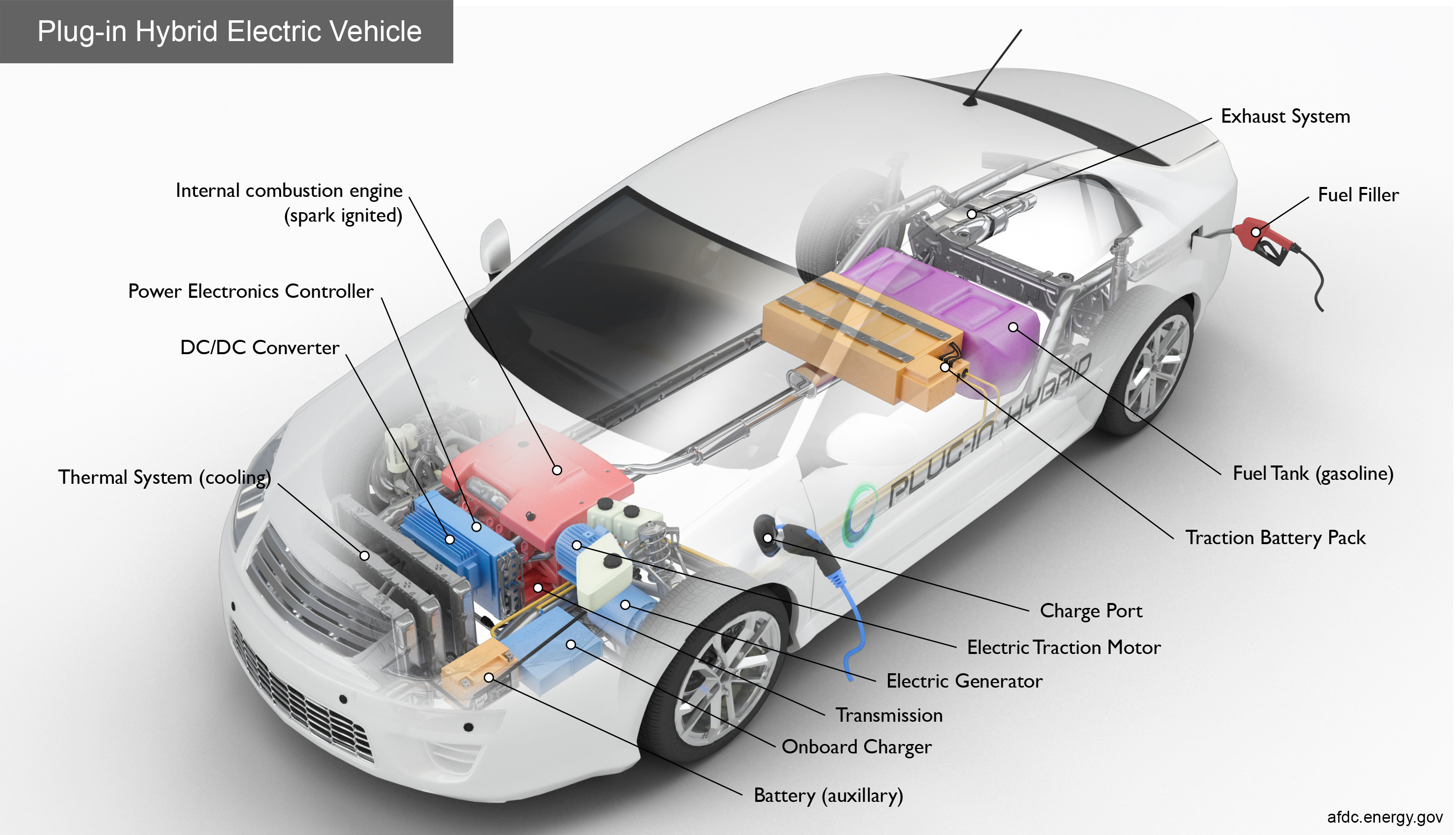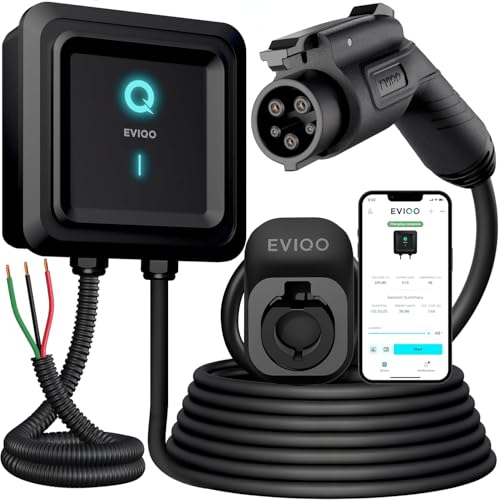Figuring out how do i charge a hybrid car can feel confusing, especially with different types of hybrids on the road. You might be wondering if you need special equipment, how long it takes, or if you even need to plug your car in at all. The answer isn’t one-size-fits-all, and understanding the distinction is the key to unlocking your vehicle’s full potential for fuel savings and performance.
The way you charge a hybrid car depends entirely on its type. A traditional “self-charging” hybrid recharges its own battery automatically while you drive and does not need to be plugged in. A Plug-in Hybrid (PHEV), however, has a larger battery and must be plugged into an external power source to maximize its electric-only driving range and fuel efficiency.
Leveraging extensive analysis of vehicle specifications and charging data, this guide unpacks the exact steps for every scenario. We’ll eliminate the confusion by showing you how to instantly identify your vehicle type, master every charging method from a standard wall outlet to a public station, and adopt the best practices that experts use to maximize battery life and minimize costs.
Key Facts
- Two Distinct Types: The most critical fact is that there are two kinds of hybrids. Traditional hybrids are “self-charging” and never need to be plugged in, while Plug-in Hybrids (PHEVs) require external charging to use their full electric capabilities.
- Significant Electric Range: A key benefit of a PHEV is its ability to travel on electric power alone. Data shows this range is typically between 10 and 80 miles, covering the average daily commute for many drivers.
- Charging Speed Varies Drastically: Home charging times for a PHEV differ significantly by method. A standard Level 1 (120V) outlet takes 8-12 hours for a full charge, while an upgraded Level 2 (240V) station reduces that time to just 2-4 hours.
- Not Charging Has a Downside: If you don’t charge a PHEV, it will still run on its gasoline engine. However, research indicates it may get worse fuel economy than a traditional hybrid because it’s carrying the extra weight of a large, depleted battery.
- Home Charging is Most Economical: While public stations are convenient, charging your PHEV at home is generally the most cost-effective option, as it relies on lower residential electricity rates.
Step 1: Identify Your Hybrid Car Type (The Crucial First Step)
The first step is to determine if you have a traditional “self-charging” hybrid, which doesn’t need to be plugged in, or a Plug-in Hybrid (PHEV), which does. Before you look for a plug, let’s answer the most important question: Do you even need one? This single distinction, highlighted in all manufacturer and expert guides, will dictate your entire approach to how you charge a hybrid car.

- Traditional Hybrid (also called a full hybrid or “self-charging” hybrid): These vehicles have a gasoline engine paired with an electric motor and a small battery. They are designed to be completely self-sufficient and do not have a charging port. You cannot and do not need to plug them in.
- Plug-in Hybrid (PHEV): These vehicles have a much larger battery pack than traditional hybrids, allowing them to travel a significant distance on electric power alone. The key identifier is that they do have an external charging port on the side of the car, similar to a gas cap door. If your hybrid has a plug, this is the guide for you.
Traditional Hybrids (Self-Charging / Full Hybrids)
Traditional hybrids charge automatically through regenerative braking and the gasoline engine; you do not need to plug them in. The car’s intelligent system manages the battery charge level for you without any external action required. Your car recharges itself every time you brake or slow down, turning motion into power! This happens in two primary ways:
- Regenerative Braking: This is the main charging source. When you press the brake pedal or even just lift your foot off the accelerator, the electric motor reverses its function. Instead of using electricity to turn the wheels, it uses the wheels’ momentum to run as a generator, capturing kinetic energy that would otherwise be lost as heat. As the U.S. Department of Energy explains on
afdc.energy.gov, this recovered energy is converted into electricity and sent back to the battery. - Internal Combustion Engine (ICE): The gasoline engine also plays a role in charging. At times when the engine is running and producing more power than is needed to move the car (for example, while cruising at a steady speed), the excess energy is used to power a generator that recharges the battery.
Plug-in Hybrids (PHEVs)
PHEVs have a larger battery for significant electric-only range and must be charged externally to maximize fuel efficiency and performance. This ability to plug in is their defining feature and primary advantage over traditional hybrids. If your car has a charging port door, then this guide is for you. Let’s get charging!
Key features that separate a PHEV from a traditional hybrid include:
* Larger Battery Pack: This allows the vehicle to store much more electrical energy.
* Electric-Only Travel: PHEVs are designed to travel for an extended distance using only the electric motor. According to various automotive reports, this range is typically between 10 and 80 miles on a full charge.
* External Charging Port: This allows you to replenish the battery from an external power source, which is essential for utilizing the electric-only mode.
The core benefit of a PHEV is its versatility. You get the zero-emissions, low-cost performance of an electric car for most daily driving, with the long-range security of a gasoline engine for road trips, eliminating range anxiety.
Step 2: Choose Your PHEV Charging Method
PHEV owners can charge at home using a standard 120V outlet (Level 1) or an installed 240V station (Level 2), or use public Level 2 and DC Fast Charging stations. Each method offers a different balance of speed, cost, and convenience. Which charging speed best fits your daily routine and budget?
It’s important to note that all charge times are estimates and can vary based on your specific vehicle’s battery size, the battery’s current state of charge, the power output of the charging station, and even the ambient temperature.
| Charging Level | Location | Voltage | Typical Full Charge Time (PHEV) | Best For |
|---|---|---|---|---|
| Level 1 | Home | 120-Volt | 8 – 12+ Hours | Overnight charging, convenience |
| Level 2 | Home / Public | 240-Volt | 2 – 4 Hours | Daily use, quick top-ups |
| DC Fast Charge | Public | 480-Volt+ | < 30 Minutes (for 80%) | Long-distance road trips |

Level 1 Home Charging: The Everyday Standard
Use the portable charging cord that came with your PHEV to charge it overnight from any standard 120-volt household outlet. This is the most accessible and straightforward way to charge your vehicle, requiring no special installation. Most PHEV owners find this method perfectly sufficient for their daily needs.
Here’s the simple process:
1. Locate Your Equipment: Find the portable charging cord (also known as an EVSE) that came with your vehicle. It’s usually stored in the trunk or a designated compartment.
2. Plug Into Power: Plug the cord into any standard, grounded three-prong 120V outlet in your garage or driveway. Ensure the outlet is in good condition.
3. Connect to Your Car: Open the charging port door on your PHEV and connect the other end of the charging cable to your car. Your vehicle will likely have an indicator light to confirm that charging has begun.
Pro Tip: This is the perfect “set it and forget it” method. Plug in when you get home, and wake up to a full charge, ready for your morning commute.
Level 2 Home Charging: The Fast Upgrade
Installing a Level 2 (240V) charger at home significantly reduces charging time to 2-4 hours but requires professional installation. This is a popular upgrade for PHEV owners who have longer daily commutes, want the flexibility of a quick top-up, or simply prefer the convenience of faster charging.
- Pros: Dramatically faster charging speeds, which can be essential for households with multiple EV drivers or for quickly preparing the car for an evening outing after a day of driving.
- Cons: This method has an upfront cost. Based on industry data, the equipment and professional installation by a licensed electrician can range from $300 to over $2,000, depending on the charger and the complexity of the installation.
Public Charging: Power On The Go
Use public Level 2 chargers for top-ups while out, and check if your PHEV is compatible with DC Fast Chargers for rapid charging on longer trips. Public charging infrastructure is rapidly expanding, making it easier than ever to power up when you’re away from home.
Quick Fact: Many workplaces and shopping centers offer free Level 2 charging as a perk!
There are two main types of public chargers you’ll encounter:
* Public Level 2 Chargers: These are the most common type, found in places like shopping mall parking lots, office buildings, hotels, and public garages. They use the same 240V power as a home Level 2 station and will charge your PHEV in a few hours.
* DC Fast Chargers (Level 3): While primarily designed for fully electric vehicles (BEVs), some PHEV models are compatible with this technology. A crucial note of caution: DC Fast Charging is not compatible with all PHEVs and is typically more expensive than Level 2 charging. Always confirm your vehicle’s compatibility before attempting to use one.
Here’s the typical process for using a public charger:
1. Find a Station: Use an app on your smartphone (like PlugShare, ChargePoint, or Electrify America) to locate a nearby charging station.
2. Authenticate Payment: Most public chargers require you to authenticate before use. This is usually done through the network’s mobile app, an RFID membership card, or a credit card.
3. Connect the Cable: Once authorized, unplug the charging cable from the station and connect it firmly to your vehicle’s charging port to begin the session.

Step 3: Adopt Best Practices for PHEV Charging
To maximize benefits, charge your PHEV regularly, use off-peak electricity rates to save money, and keep your charging equipment in good condition. Shifting from simply knowing how to charge your hybrid car to knowing how to do it well will enhance your ownership experience, save you money, and prolong the life of your vehicle’s battery. Are you getting the most value out of your plug-in hybrid?
Here are some expert tips for maximizing your PHEV investment:
* Charge Regularly: The primary benefit of a PHEV is its electric range. To take full advantage of this, make it a habit to plug in whenever you can, especially overnight at home. Consistently starting your day with a full battery means you’ll use less gasoline and produce fewer emissions. Failing to charge your PHEV essentially turns it into a heavier, less efficient traditional hybrid.
* Optimize for Cost: Many utility companies offer “time-of-use” electricity plans with lower rates during off-peak hours (typically late at night). Most PHEVs allow you to schedule your charging sessions directly from the vehicle’s infotainment screen or a companion app. Set your car to start charging after 10 PM to significantly reduce your energy bill.
* Maintain Battery Health: Modern PHEVs have advanced battery management systems to prevent overcharging. However, as a general best practice for lithium-ion batteries, some sources suggest that keeping the state of charge between 20% and 80% can promote long-term health. For daily driving, charging to 100% is perfectly fine and often necessary to get your full electric range.
* Check Your Equipment: Periodically inspect your portable charging cord and any home charging station for signs of wear or damage. Keep the charging port on your vehicle clean and free of debris to ensure a solid and safe connection every time you plug in.
For the ultimate convenience in home charging, investing in a high-quality Level 2 EVSE can transform your daily routine.
FAQs About how do i charge a hybrid car
Here are direct answers to the most common questions people have when learning how to charge a hybrid car.
Do you need a special charging station for a hybrid car?
No, you do not necessarily need a special station. All plug-in hybrids can be charged using the portable charging cord that comes with the vehicle, which plugs into any standard 120V household outlet. A “special” 240V Level 2 charging station is an optional upgrade that you can have professionally installed at home for significantly faster charging speeds.
How long does it take to charge a plug-in hybrid at home?
The time it takes to charge a PHEV at home depends on the charging level you use. The two options are:
* Level 1 (120V Outlet): Using a standard household wall socket, a full charge typically takes between 8 and 12 hours.
* Level 2 (240V Charger): Using an installed home charging station, a full charge is much faster, typically taking only 2 to 4 hours.
How often do you have to charge a hybrid car?
This depends entirely on the type. You never need to plug in a traditional hybrid, as it charges itself automatically. For a plug-in hybrid (PHEV), it is highly recommended to charge it as often as possible, ideally daily. Regular charging is the key to maximizing its electric-only driving range, achieving the best possible fuel economy, and minimizing your gasoline costs.
What happens if I don’t charge my plug-in hybrid (PHEV)?
If you don’t charge a PHEV, it will simply run on its gasoline engine, operating much like a traditional hybrid car. The car remains perfectly drivable. However, you will lose the main benefit of owning a PHEV. Critically, it may get lower fuel economy than a standard hybrid because it’s carrying the extra weight of a large, depleted battery without using it for propulsion.
How much does it cost to charge a plug-in hybrid at home?
The cost to charge a plug-in hybrid at home is determined by your local residential electricity rate, measured in cents per kilowatt-hour (kWh). It is almost always the most affordable way to fuel your vehicle. To save even more money, check if your utility provider offers lower off-peak rates and schedule your car to charge during those hours.
Final Summary: Key Steps to Charging Your Hybrid Car
Mastering how do i charge a hybrid car is a simple process once you understand the fundamental difference between a self-charging hybrid and a plug-in hybrid (PHEV). For owners of traditional hybrids, the process is effortless—the car handles everything automatically. For PHEV owners, plugging in regularly is the key to unlocking incredible fuel efficiency and a smooth, quiet, all-electric driving experience for daily trips.
By following the steps outlined in this guide, you can confidently and efficiently manage your vehicle’s power needs.
* First, identify your vehicle type: Does it have a charging port or not?
* If it’s a PHEV, choose your charging method: Use the convenient Level 1 cord for overnight charging or upgrade to a faster Level 2 station.
* Finally, adopt best practices: Charge regularly and use off-peak electricity to maximize your savings and the benefits of your vehicle.
Now that you know how to power your vehicle efficiently, you’re ready to maximize the benefits of hybrid driving
Last update on 2025-12-02 / Affiliate links / Images from Amazon Product Advertising API










